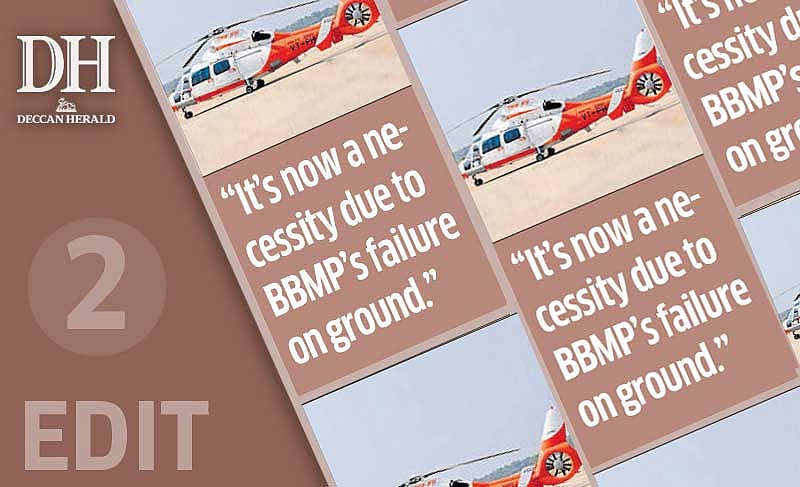
Bengaluru boasts of many firsts, and to this list is now added the country's first helicopter-taxi service. A Kerala-based company has begun flying passengers from Kempegowda International Airport to Electronics City, a driving distance of 53 km, in less than 15 minutes. To travel the same distance by road, going through some of the most congested parts of the city, currently takes nearly three hours. The heli-taxi service has come as a relief, especially to the employees, executives of, and visitors to, IT companies located in Electronics City as they can fly in, finish their work and fly out without having to endure the pain of getting caught in the city's notorious traffic snarls. In recent years, many large investors have shied away from Bengaluru or put their expansion plans on hold, fearful of the city's crumbling infrastructure. Therefore, the heli-taxi service - which the promoters plan to expand to other areas like Malleshwaram, MG Road, Jayanagar and Koramangala in phases - does offer a solution to traffic congestion and lost productivity to at least those who can afford to pay for it.
While any service that brings convenience to people at reasonable cost is welcome, that Bengaluru has come to need such a facility does reflect on the city's traffic mess, its bad planning and management. It shows up the failure of successive governments and civic administrations to build a robust public transport system and ensure smooth flow of traffic. As services like heli-taxi can serve only a tiny part of the population, the government simply cannot escape its responsibility to provide easy commuting options to lakhs of people who are currently undergoing tremendous hardship everyday. The expanding Metro train service, though a welcome addition, appears to have weaned away more BMTC passengers than users of private vehicles as last-mile connectivity from its stations remains a major issue. After much public pressure, there is now some movement on augmenting suburban train services, but there is a long way to go on this.
As the number of vehicles in Bengaluru rose from 15 lakh in 2001 to over 70 lakh now, with only marginal improvement in road infrastructure, authorities should have tackled the problem before it became so unmanageable. Instead, what we have seen for years is a lethargic approach on the part of the BBMP. The army, for instance, agreed to hand over 62 acres of its land parcels in prime parts of the city to enable a faster build-up of road infrastructure in exchange for land near Anekal. More than a year after the offer was made, there is little progress on it. The BBMP should seize the offer, which will help speed up many stalled projects.
